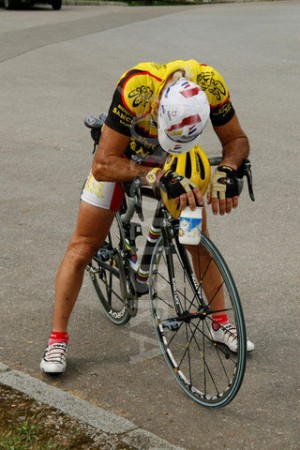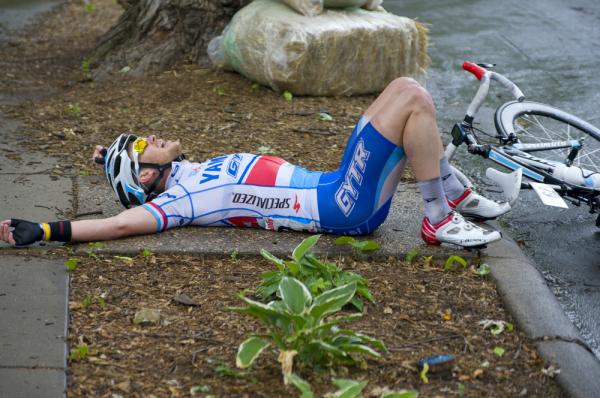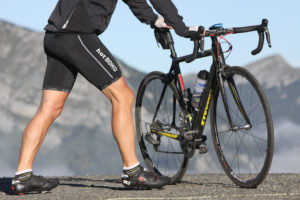What if there was something that you could do to improve comfort on the bike, increase performance, enhance recovery, as well as help prevent injuries? Turns out there is- stretching.
That being said, just reaching down and touching your toes isn’t enough to help your muscles. You need to know what stretches to do, when to do them, as well as for how long. Incorporating a regular daily stretching routine should be done by everyone and especially if you are riding.
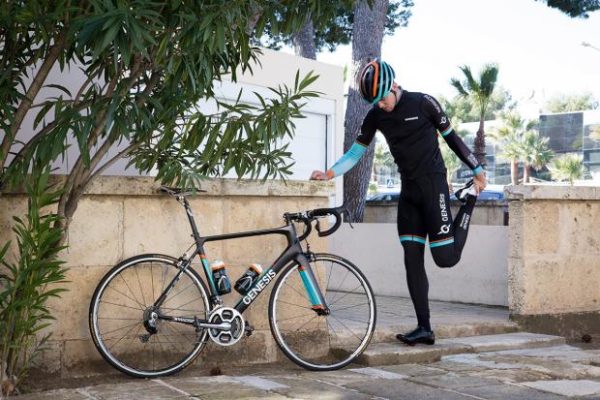
The biggest thing with stretching is making sure that you are doing them properly, because if you’re not you can cause injury. The focus with cycling is obviously the legs, but the core and upper body can’t be neglected either.
This stretching routine is only a base, and can and should be built upon.
Cycling Stretching Routine
Hamstrings
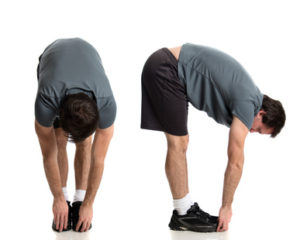
Start by standing with your legs straight and reaching down toward your toes. It shouldn’t be painful and don’t bounce. Hold it for twenty to sixty seconds (More on that below.) Then cross one leg in front of the other and do the same. Switch legs. This is a great stretch for the hamstrings and the back of the whole leg because of the angle that is created between your upper and lower body on the bike.
Quads
Next focus on your quads. The quads are used a lot in cycling and need to be focused on. Find a wall or something to hold on to, and stand on one leg with the other bent behind you at the knee. Grab your ankle with the hand that’s on the same side of the knee that is bent and pull gently up toward your buttocks. The trick is to keep your hips level without tilting them forward. Do this by sucking your stomach in and almost trying to push your tail bone down and forward toward the floor. Do both legs.
Calves
The calves are another big area that, depending upon your position on the bike, can receive a lot of abuse. Find a wall and place both hands on it at about face level. Now take one leg and straighten it back behind you keeping your heal on the ground or as close to it. Your other leg should be bent with your foot directly beneath your head. Now take the leg that’s straight and slightly bend your knee keeping your heal on the ground. You should feel the stretch throughout your calf. If not bend a little farther but make sure you don’t feel any pain.
Glutes
Next, find a bed or counter that’s about as high as your quad. Place one foot on the bed, or other surface, with your knee almost at the most it can bend but not quite. You don’t want any pressure felt through the knee. Then press your chest straight forward to the inside of your knee. You should feel the stretch through the buttocks. Do the same for the other leg.
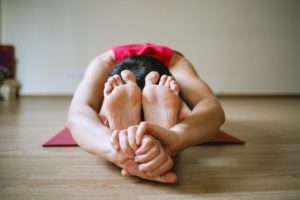 Legs & Back
Legs & Back
Now sit down on the floor with your legs straight out in front of you. Your feet should be together with no bend in your knees, or as little as possible. Now with your toes pointed straight up, bend forward at the hips reaching for your toes with your hands. Try to keep your back straight without arching your shoulders farther forward so you can reach further. You should feel the stretch all the way down the backs of your legs as well as up into the back.
These stretches above are the basic stretches to start with for cycling. Any sport, and cycling in particular, uses many muscles throughout the body and they all should be stretched, but these are the big ones to focus on.
When should you be stretching?
You should be doing these stretches after you ride. You never want to stretch cold muscles before a ride, always warm up and make sure you are limber. If your legs are sore immediately after a ride, stretching can help to relieve them, but be extra gentle. Your muscles are already fatigued and injury can result much easier if they are overstretched.
How long should you be stretching for?
Each stretch should be held for a minimum of twenty seconds if you are pressed for time, but ideally around a minute. Less than a minute is good for recovery, more than a minute is good for lengthening muscles if they are constantly tight. Hamstrings are a big area that tend to be tight which can also result in back tightness and pain. If you have muscle tightness in your back, there’s a good chance that you have tight hamstrings. In general it’s always better to have loose, flexible muscles than tight.
These stretches listed above are just a base. They need to be added onto with additional stretching routines for cyclists.
Stretching can be a great way to help your riding and prevent, as well as overcome, injuries. The biggest thing in stretching is to do them properly so if you are unsure ask someone who knows and can teach you. Taking the time to learn once will pay huge dividends in the long run of your cycling endeavors.
